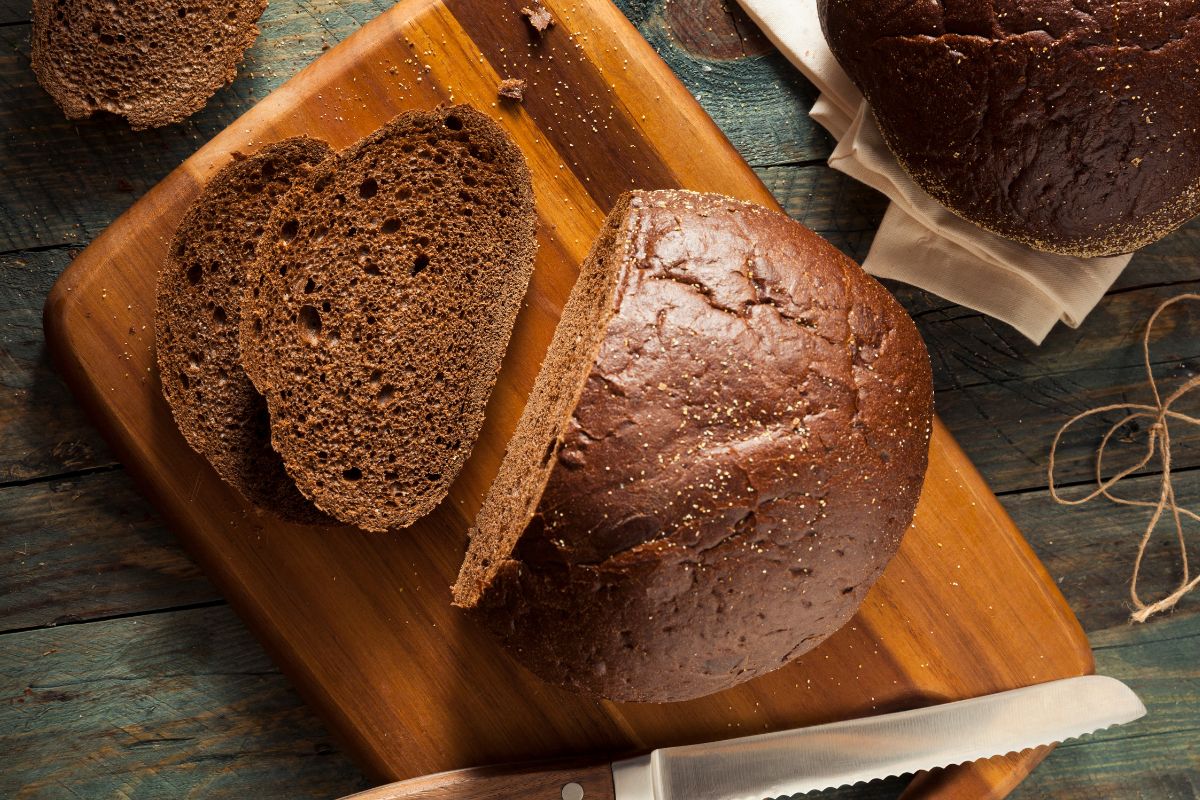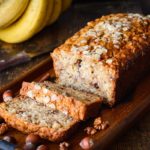Pumpernickel bread is a type of dark rye bread. It has a dense texture and a slightly sweet flavor.
The name comes from its shape, which resembles a large round loaf. This type of rye bread was served with rye berries to make a rye meal.
Pumpernickel was originally made using coarsely ground whole wheat flour.
Today, however, most bakeries produce their pumpernickel bread using refined white flour.
Pumpernickel bread is often served at breakfast or brunch. It’s also a favorite snack food because of its distinctive taste and texture.
In Germany, pumpernickel bread is traditionally eaten during the Advent season.
You might wonder why some bakeries call their pumpernickel loaves “pumpernickel bread” instead of “dark rye bread”.
This is because pumpernickel bread contains less gluten than other types of bread. Gluten is the protein found in grains such as wheat.
What Exactly Is Pumpernickel Style Bread?
In Germany, pumpernickel is one of the oldest types of bread.
There are different kinds of pumpernickel bread, including sweet pumpernickel, sour pumpernickel, and pumpernickel rolls.
The word “pumpernickel” itself derives from the German words for “pumpkin,” “bread,” and “cheese.”
This type of bread is usually made with coarsely ground dark rye flour, although some versions use whole grain rye flour.
This particular style of bread is typically slow-cooked over several days at a very low temperature.
During the long cooking process, the dough rises and develops a distinctive flavor.
Traditional pumpernickel bread is often served with cheese, butter, and jam. Some people enjoy eating it plain, too.
What Is The Nutritional Content Of Pumpernickel Bread?
If you like rye bread, try making your next loaf with pumpernickel flour. This type of wheat contains more protein than regular white flour, and it makes a soft crumbier texture.
Pumpernickel bread is often used for sandwiches because of its hearty flavor and chewy texture.
The grain itself is rich in vitamin E, magnesium, iron, zinc, thiamine, riboflavin, niacin, folate, lutein, and beta-carotene.
You’ll find even more nutritional benefits when you make pumpernickel bread at home.
And, What About The Health Benefits Of Pumpernickel Bread?

Here are some of the health advantages associated with traditional whole grain Pumpernickel bread.
The benefits of this type of light rye bread are endless! Using whole grains and caraway seeds, for example, can up the benefits too.
Lowered Glycemic Score
The glycemic index is a measure of how quickly food affects blood sugar levels. A high glycemic index indicates rapid digestion and release of glucose into the bloodstream.
Foods with a high glycemic index include processed foods such as cookies, cakes, crackers, candies, chips, cereals, pasta, rice, and other starchy foods.
Low glycemic index foods include fruits, vegetables, nuts, seeds, beans, lentils, oats, brown rice, and whole grains.
A study published in the journal Nutrition & Metabolism showed that people who ate whole grain bread had a lower glycemic response than those who ate refined wheat bread.
Whole grain bread contains complex carbohydrates that take longer to digest than simple carbs found in refined wheat products.
This slows the absorption of nutrients and reduces the spike in blood sugar levels that can lead to weight gain, fatigue, cravings, and mood swings.
It Provides Filling Fiber
Whole grains such as pumpernickel bread contain a type of dietary fiber called resistant starch.
This form of fiber does not break down during digestion like regular dietary fiber; rather, it passes through the digestive system intact. Resistant starch provides several benefits, including:
• A steady release of energy throughout the day
• Helps regulate blood sugar levels
• Supports weight management & metabolism
• Increases feelings of fullness
• May help lower LDL (“bad”) cholesterol levels
• Promotes good bowel habits
• Supports heart health
• Improves overall well-being
• Can aid in the treatment of diabetes
Contains More Nutrients Than Refined Bread
While many people think of whole grains as healthier options, there are actually some nutritional advantages to eating refined foods over whole grain varieties.
In fact, according to one nutritionist, “whole grains tend to be less nutritious.” Whole grains are high in nutrients, minerals, vitamins, antioxidants, and phytonutrients – all of which contribute to better health.
Rye bread typically contains more rye flour and pumpernickel flour which is better than coarsely ground rye flour.
Is Good For Your Gut Health
Your body needs a diverse population of beneficial microorganisms in order to maintain proper immune function.
These microbes, known as probiotics, are essential to maintaining a healthy balance of intestinal flora.
Research suggests that diets containing prebiotic fibers promote the growth of friendly bacteria in the colon.
Probiotic supplements provide added protection against harmful pathogens and encourage the growth of beneficial species.
The flour used in this bread is better than whole wheat flour and makes regular rye bread.
Great Source Of Nutrients And Lignans
Lignans are polyphenolic compounds that are found in plants and plant products.
They are derived from dietary fiber and are often referred to as phytoestrogens because they act similarly to the hormone estrogen.
Lignans are thought to help reduce risk factors for many chronic diseases, especially some cancers, cardiovascular disease, diabetes, mental illness, obesity, osteoporosis, reproductive disorders, and certain types of dementia.
The most common sources of lignans include whole grain bread, cereals, legumes, nuts, fruits, vegetables, tea, and coffee; however, there is growing interest in consuming lignans through supplements.
In fact, research suggests that lignans may play a role in preventing bone loss, reducing inflammation, improving insulin sensitivity, lowering cholesterol levels, and protecting brain cells from damage caused by Alzheimer’s disease.
How Can You Make Your Own Pumpernickel Bread?
There are many types of pumpernickel out there, but we prefer the rich flavor and texture of a classic dark brown loaf made with a combination of rye and wheat flour.
You can also make your own version of this bread at home.
Some people actually make their rye bread and pumpernickel bread with dark chocolate during the baking process, we recommend trying sliced onions with this bread as that’s what makes a real pumpernickel bread!
Final Thoughts
Pumpernickel bread has been around since the Middle Ages and was originally used as an inexpensive food source for the poor.
Today, it’s still affordable and delicious! It’s a great way to add more variety to your diet while getting lots of good nutrition. It’s much better than a sourdough starter, too!










